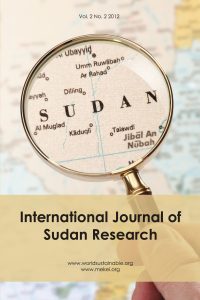Captive red-necked ostrich (struthio camelus camelus) internal egg physical characteristics and chemical values, Elobeid A. Elobeid, Dr. Aisha E. Mohamed and Ahmed E. Mohamed
- Version
- Download 140
- File Size 332.13 KB
- File Count 1
- Create Date 3rd February 2013
- Last Updated 3rd February 2013
Captive red-necked ostrich (struthio camelus camelus) internal egg physical characteristics and chemical values, Elobeid A. Elobeid, Dr. Aisha E. Mohamed and Ahmed E. Mohamed
 Elobeid Abdelraheim Elobeid, Omdurman Islamic University, Sudan
Elobeid Abdelraheim Elobeid, Omdurman Islamic University, Sudan
Aisha Elfaki Mohamed, Wildlife Research Center, Sudan
Ahmed El Amin Mohamed, University of Khartoum, Sudan
Purpose: This study was conducted to evaluate captive red-necked ostrich eggs.
Design/methodology/approach: Parent red-necked ostrich (Struthio camelus camelus) flock (5 male, 7 female) was stocked from the wild (Dindir National Park) in the second season of production. The feeding plan was 14% crude protein and 09.23 ME MJ/Kg. Internal physical egg characteristics, egg components percentage, shell thickness and egg chemical characteristics were evaluated.
Findings: Mean internal physical egg measurements were 1.32 ± 00.49 for albumen light and 19.01 ± 5.15 for yolk index. The Haugh unit was 78.58 ± 5.19. The egg chemical values showed the shell with the highest (99.50%) dry matter and ash (92.5%) and lowest (2.05%) nitrogen and nitrogen free extract. The highest CP (23.00%) and ether extract (18.90%) was in the yolk. The shell contained the highest macro and micro minerals cited except for potassium, which was higher (4.40%) in the yolk. The mean value of shell thickness was highest (02.00 ± 00.07) mm at the end.
Originality/value: The study evaluated the red-necked ostrich egg chemical composition and concluded that it is similar to the hen’s egg. This finding is in agreement with that of Carey et al. (1980) who compared the hen’s egg with the ostrich egg and found them to be of a similar chemical and nutritive value. Sales et al. (1996) reported that ostrich eggs differ little from other avian species in yolk lipid amount, but compared to poultry, the ostrich egg has a different fatty acid composition.
Keywords: Ostrich; Struthio camelus camelus; Egg values; Internal physical and chemical values
Attached Files
| File | Action |
|---|---|
| IJSR_VNEL OBEID_MOHAMED_MOHAMED-Itemid=.pdf | Download |

